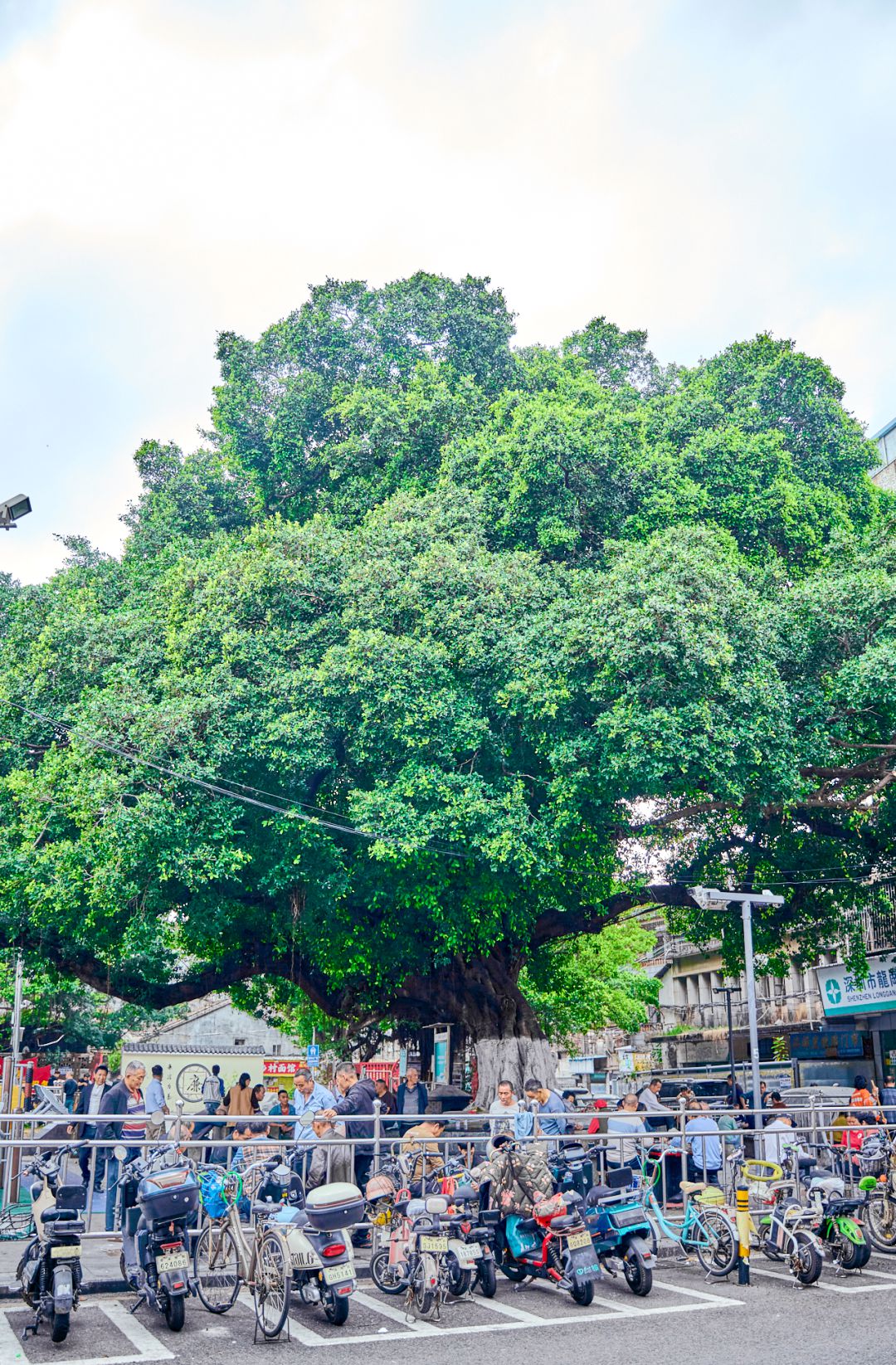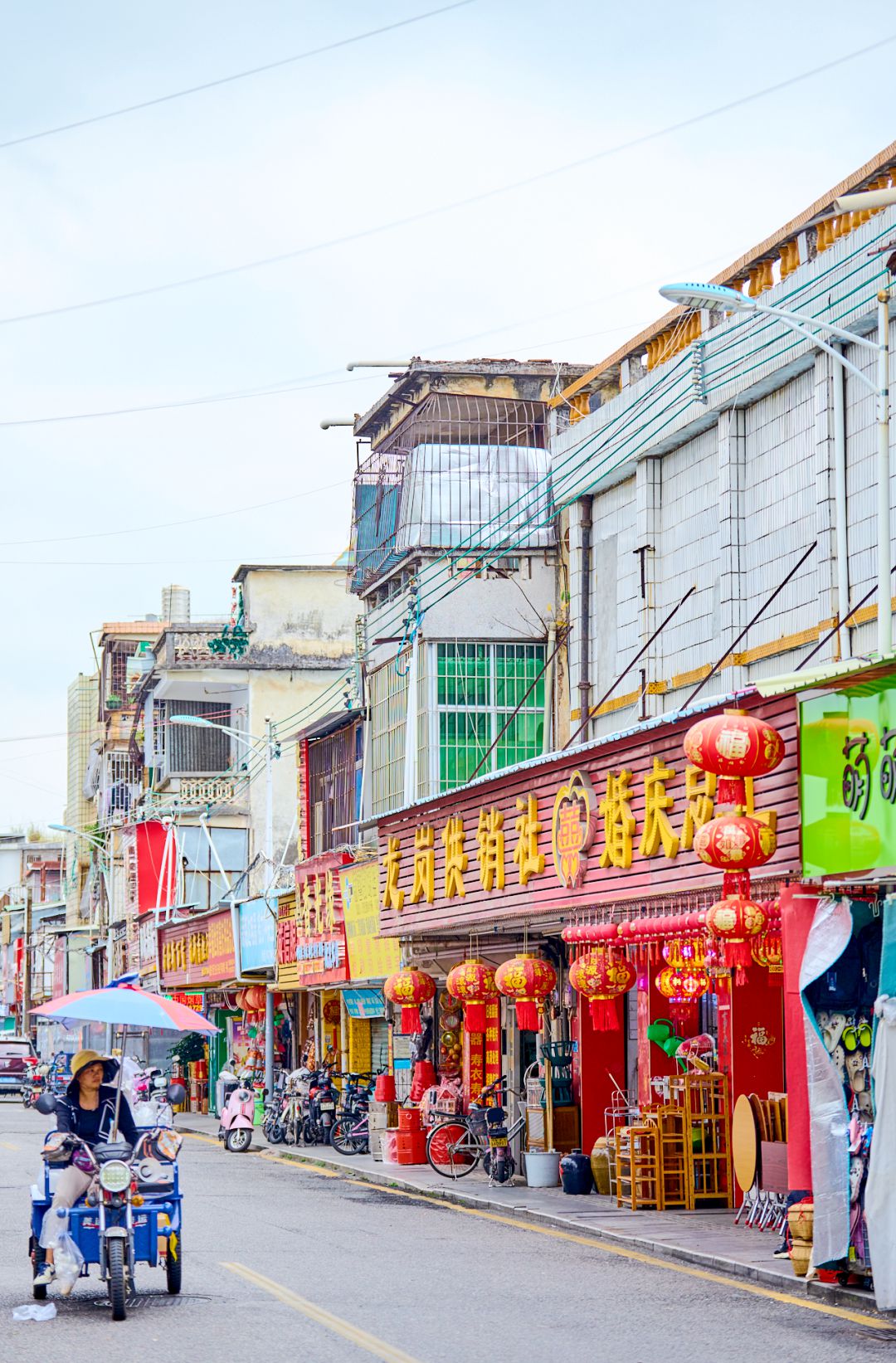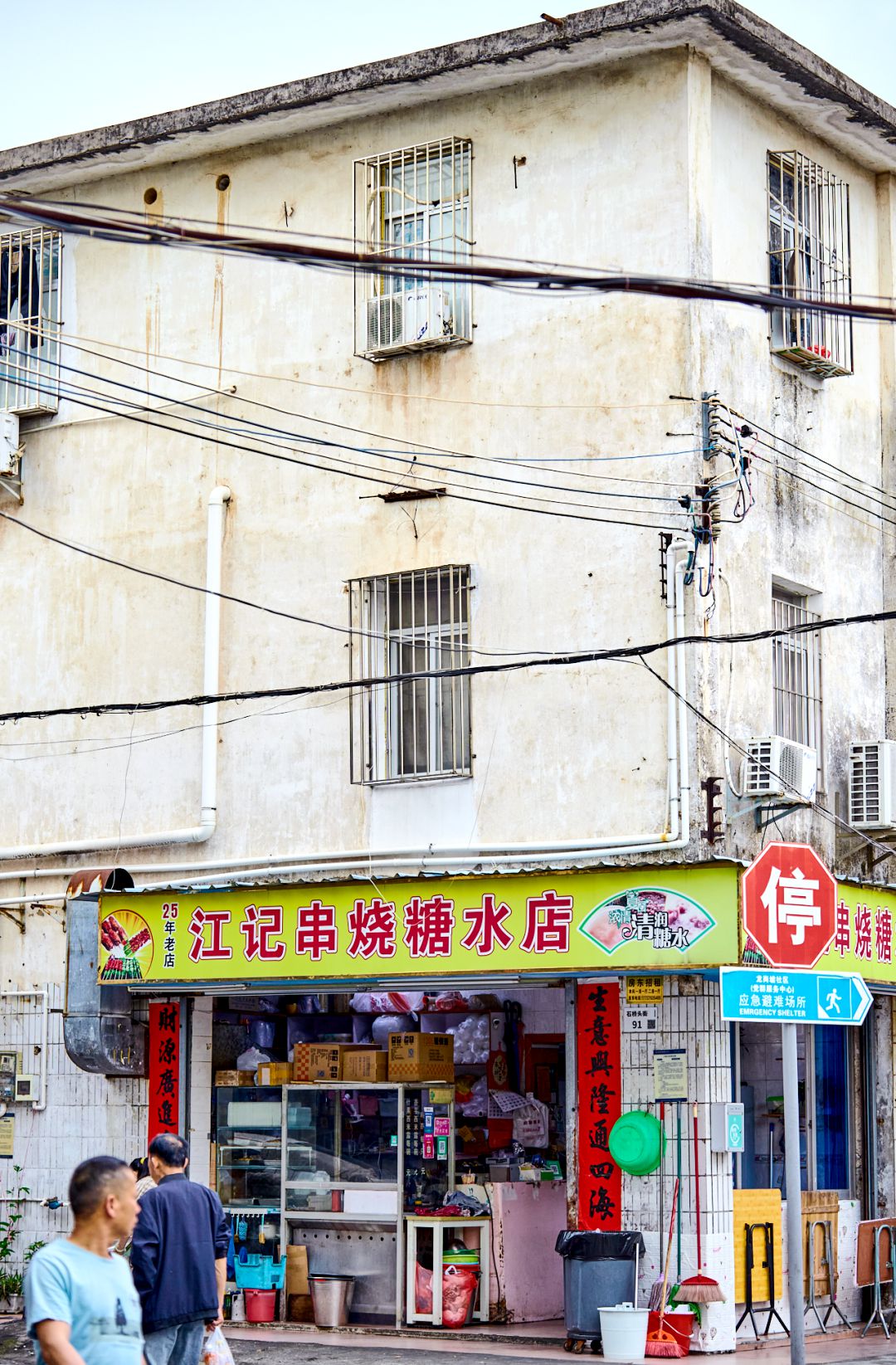Living in SZ | Longgang old market offers traditional taste
Writer: Claudia Wei | Editor: Zhang Zhiqing | From: Shenzhen Daily | Updated: 2025-03-24
In the fast-paced and bustling city of Shenzhen, there is this hidden “treasure spot” worth a day of exploration — Longgang Old Market. For an average of less than 50 yuan (US$7) per person, visitors can embark on a journey filled with culinary delights, easily spending a day with joy and surprises.

The "strange" building in Longgang Old Market. Photos from official WeChat account "深圳微时光"
Longgang Old Market probably became known to many people for a mysterious building featured in a video by architect Feng Guochuan. The architectural layout of this “strange” building is utterly irregular, with no clear sight of floor separation from the outside, resembling a whimsically assembled Lego structure. Each floor of the building measures only 1.7 meters high, requiring taller individuals to bend down to enter. It is as complex as a three-dimensional maze, leading to various rumors about its purpose, including speculation that it served as a secret base for an underground organization.
The truth is that the building was constructed by a wealthy businessman who operated a shipping business. As he had spent long periods in a ship’s cabin, the businessman heavily referenced the layout of a ship in his design of the structure. The building was left uninhabited after its builder passed away, and it gradually fell into disrepair, standing in the old market.

The centuries-old banyan tree in Longgang Old Market.
Another landmark of Longgang Old Market is a centuries-old banyan tree. During the early years of the Qing Dynasty, a large number of Hakka people relocated to Longgang District from eastern Guangdong Province. They traded their agricultural produces under the banyan tree. Over times, the area gradually evolved into an important market, which is now known as Longgang Old Market.
The old market has been developed into a public square, where residents can relax, read newspaper, exercise and dance. As the population grew, numerous stalls emerged in the market selling traditional snacks and delicacies such as zongzi and glutinous rice dumplings at prices significantly lower than those found elsewhere in Shenzhen.

A view of Xudu Street, the main load of Longgang Old Market.
Xudu Street has a rich historical background, serving as the main road of the old market since as early as 1870 during the reign of Emperor Tongzhi of the Qing Dynasty. The name of “Xu” in ancient southern China referred to a market, where trading was lively on the first, fourth and seventh days on the Chinese lunar calendar. Even though Xudu Street may not be as bustling as it was in the past, it still holds charm with its remaining businesses housed in the old architectural structures, making it a worthwhile visit.

This dessert shop on Xudong Street has a history of over two decades.
Nestled on an alley off Xudu Street stands a dessert shop that has been serving customers for over two decades. Despite its weathered appearance, the shop remains a local favorite, particularly among students, for its selection of Chinese desserts that offer a refreshing sweetness, perfect for cooling off on hot summer days. With an average cost of around 15 yuan per person, it provides an affordable treat in the otherwise high-cost city of Shenzhen.

A stall selling Hakka-style snacks in Longgang Old Market.
Near the centuries-old banyan tree in the market, numerous stalls and shops offer Hakka-style snacks, such as glutinous rice cakes and rice dumplings. Among them, Wuhua Grocery Store stands out for its consistently traditional flavors at reasonable prices, attracting a loyal local following. Most snacks in the store are priced between 3 to 5 yuan per serving, with some seasonal specialties tailored to specific weather conditions. The glutinous rice cakes, often filled with sesame and crushed peanuts, are soft, fragrant and sweet. The snacks are freshly made every day, and can be sold in assorted varieties for visitors eager to savor authentic local flavors.
There are other notable places around the Longgang Old Market worth visiting, such as Longyuan Garden, Hehu New Residence and Longxing Temple, each steeped in significant cultural heritage. Longgang District’s extensive history offers a glimpse into the Hakka culture and traditions.
For enthusiasts of traditional culture seeking to delve into Shenzhen’s historical roots, saving a day to explore Longgang promises an enriching experience of discovery and cultural appreciation.
Metro: Line 3 to Shuanglong Station (双龙站), Exit F, and walk for around nine minutes